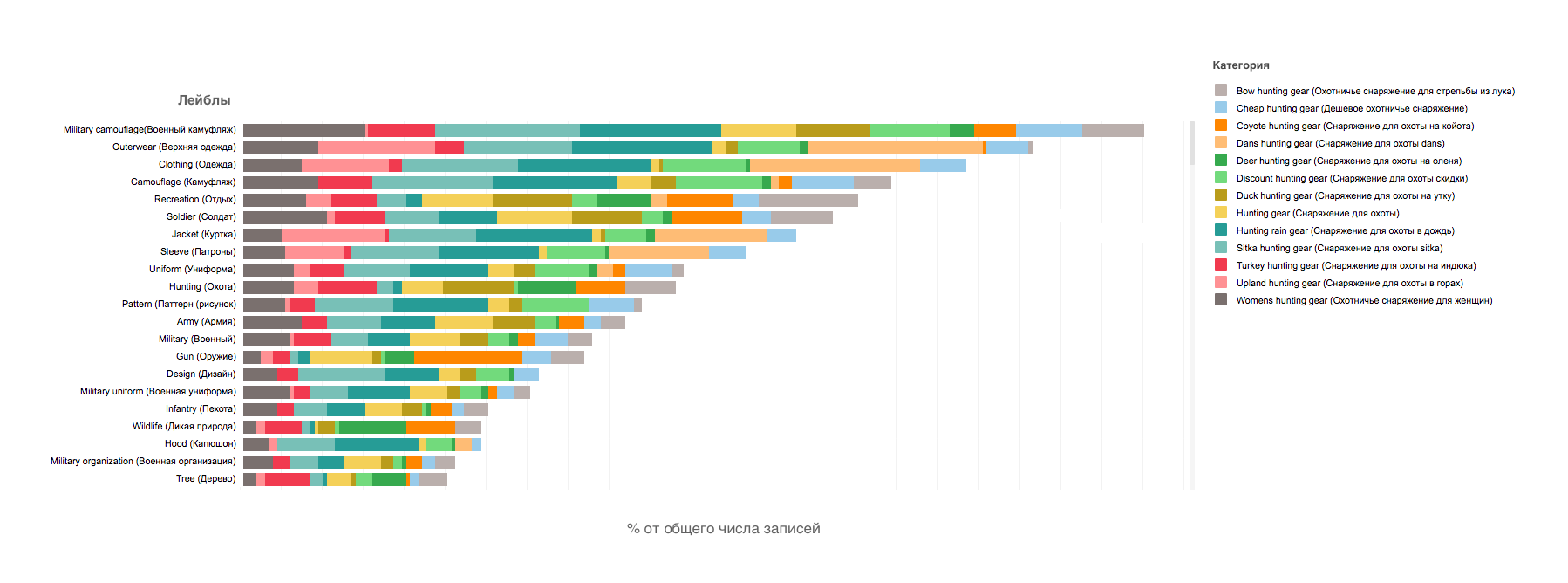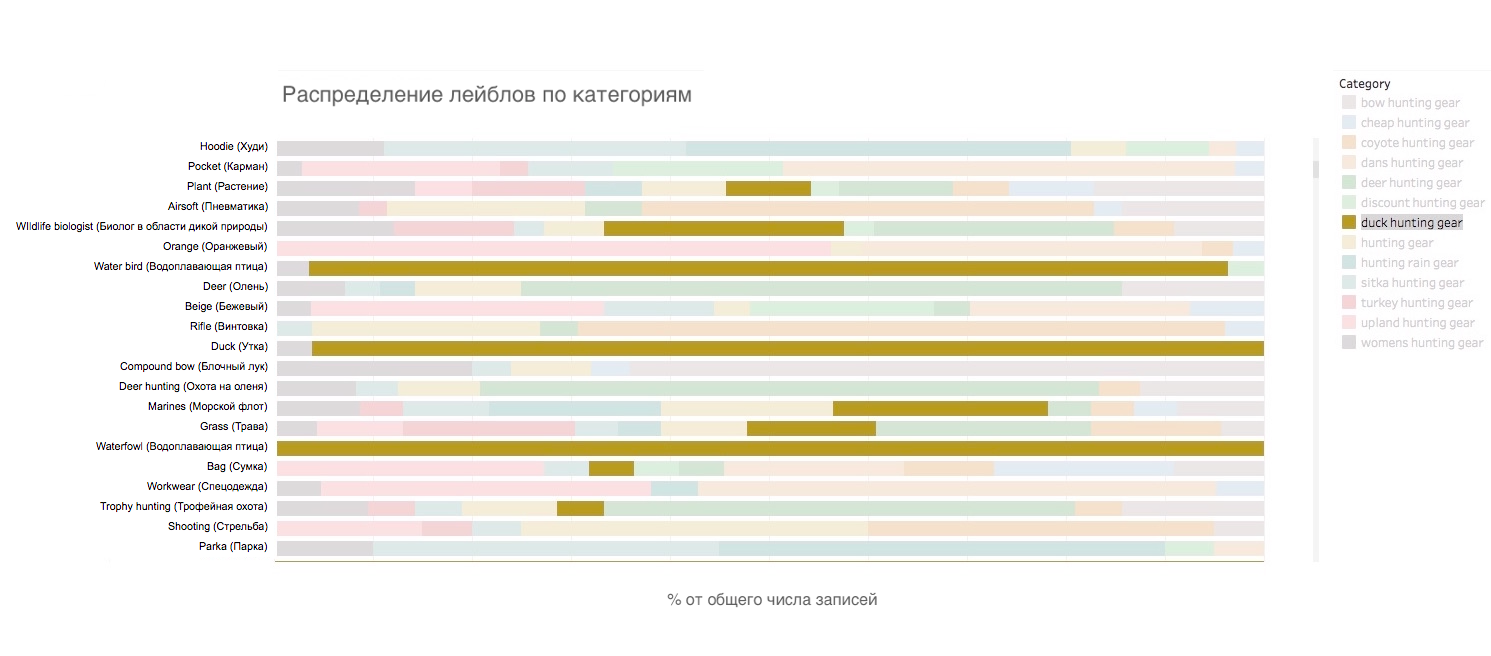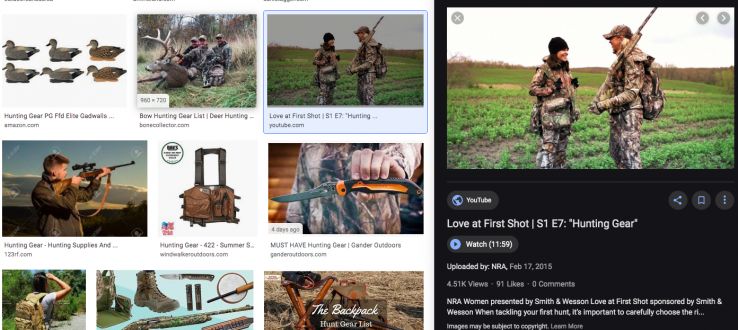
It would seem that register Alt and Title for images on the site - and you are already ahead of lazy competitors. But no, that may not be enough. In addition to textual support, the picture itself plays a role - or rather, the entities that smart Google will detect on it. And as it turned out, a lot of interesting things are revealed.
They translated an interesting study: how Google analyzes images and how to understand what should be present in the image for a higher ranking.
In 2013, the View Image option appeared in Google image search results. Users could open the picture without going to the site on which it was located. The innovation reduced organic traffic from image search results by 63%.
In February 2018, Google decided to remove the View Image button. Now, to open the picture in full size, the user must go to the site. So “Pictures” again became an important source of search traffic.
A recent study showed how, after these changes, organic traffic to the website by images increased by 37%.
Image search potential has returned, but how to use it most effectively? How to optimize images for better ranking? Can Google's Vision AI understand image ranking principles?
In particular, the researchers were interested in the fact that it was Google’s thematic modeling that could tell about images that were ranked by specific search queries and groups of thematically related keywords.
Note: This is a translation of the study in English from Google. All keywords are given in the original spelling (plus translation in brackets).
We analyze the theme of "hunting gear" (hunting equipment)
At first, 10-15 top queries in the topic were selected. For this article, the thematic category “hunting gear” has been selected. For her, we selected key queries of three types: high-intent (queries with high intent), high-value (queries with high conversion), high-volume (high-frequency).
These are the requests:
- Bow hunting gear (archery hunting equipment)
- Cheap hunting gear
- Coyote hunting gear (coyote hunting gear)
- Dans hunting gear (dans hunting gear - approx .: Dan's - brand name)
- Deer hunting gear (deer hunting gear)
- Discount hunting gear
- Duck hunting gear (duck hunting equipment)
- Hunting gear
- Hunting rain gear
- Sitka hunting gear (sitka hunting equipment - approx .: Sitka - brand name)
- Turkey hunting gear (turkey hunting gear)
- Upland hunting gear (mountain hunting gear)
- Womens hunting gear (hunting equipment for women)
Then, for each request, the top 50 images in the Google search results were selected. In total, 650 images were analyzed using the Google Vision API.
For each image, a position in the output was fixed (this is important for further analysis).
What you can learn from labels
The first and, perhaps, the main thing for which it is worth using the API is image labeling . Modern image recognition models pars each image and give out labels (labels) for objects that can be identified on the image.
Important. Next, we show fragments of graphs with translation. Using the link, you can go to the original interactive chart, which is significantly larger in volume, and watch trends and individual moments there already. To translate whole huge canvases we considered inappropriate.
You can work with charts - clicks on individual labels, categories and words highlight fragments of the chart. And there are many tabs. (We liked the tool, and you?)
On most images, 4 to 10 objects can be recognized. For example, for keywords related to “hunting gear”, we got the following distribution of labels:

Top labels for "hunting gear" ( interactive chart )
From this data you can understand a lot about what, from the point of view of Google, should be present in a relevant image.
Some conclusions:
- For top images for all 13 keywords, a fairly uniform distribution across the labels is noted.
- About 5% of the images featured clothing, most often camouflage. If images with camouflage equipment are posted on the hunting outfit blog post, the chances of a picture appearing in the top will increase.
- Often there are labels associated with nature: wildlife, trees, plants, animals, etc. Photos of hunters in camouflage outdoors near animals are actively represented in the issue of the keys under consideration.
If you take a closer look at the distribution of labels by category of keywords, you can better understand how the ranking principles for different queries differ:

Distribution of image labels in the hunting gear category ( interactive chart )
Here you can note:
- For “turkey hunting gear” and “duck hunting gear” requests, birds should be present in the images, while for other requests related to hunting, photos with birds rarely get into the top of the image search.
- On the interactive dashboard, you can see how the images are distributed by a specific keyword and compare with the distribution by other words. A separate category is selected below - “duck hunting gear”, and you can see the distribution of the most popular labels by keywords. The labels "water bird" "duck" "bird" "waders" "hunting dog" "hunting decoy" etc. are extremely widely represented. Such information is a great hint for selecting images for the page.

Distribution of image labels in the duck hunting gear category ( interactive graph )
PromoPult system is an advertising complex for attracting customers from the Internet. SEO, PPC, SMM in one account. Full automation, ready checklists, precise settings. One-click customer reports, result guarantees, industry solutions. Designed for those who want to free up time for really serious work.
Comparison: High and Low Ranked Images
For a deeper understanding of the algorithms, it is worth paying attention to the differences between high-ranking (top-10 in image search) and low-ranking (from 41 to 50 positions) images.

Labels for images in the top 10 and top 41-50 for "hunting gear" ( interactive chart )
You may notice that some labels are ranked better than others . For example:
- Labels associated with clothing are much more likely to be in the top SERPs.
- Labels with animals are less likely to get to the top, but there are a lot of them in the last ten (41-50).
- Weapons often appear in the top of images.
By exploring the popular image labels for your keywords, you can find many patterns related to ranking images in your subject. The results will vary depending on the keywords, however a careful analysis will make very useful conclusions.
Using other artificial intelligence APIs, you can dive even deeper into image ranking analysis.
Even more in-depth analysis
Deepai.org has an excellent set of APIs with which you can get more information about the images in your subject.
One of these APIs is “Image Captioning”, which is similar to labeling images on Google, but description labels are used here instead of individual labels, for example “the man is holding a gun”.
We ran images through this API that we worked with through the Google APIs and collected additional information for each image.

Distribution of image descriptions in the hunting gear category ( interactive graph )
As with labels, we analyzed the distribution of descriptions by keyword and the overall frequency of all keywords. Then we compared the descriptions of images from the top 10 and top 41-50 (see comparative tables in the interactive chart).
Another interesting find
Sometimes you can find a preview of the video on YouTube in the Google search results in pictures. Here is an example of the issue on the subject of hunting equipment:

It can be assumed that when ranking the preview video Google partially relies on the recognition of image labels. Despite the fact that in this case there are other important factors (the “hunting gear” key in the video title and the source is a popular channel), the presence of the same label elements as in the top images seems to play a role.
Choosing the right preview for the video can contribute to a good ranking, so the information you get from image analysis should also be used to promote the video.
Obvious (and non-obvious) findings
We saw how deeply Google analyzes images. At the same time, image optimization in SEO is still in its infancy. It can be assumed that this is also due to the lack of resources for the production of high-quality relevant images.
Therefore, to say that such studies need to be carried out and immediately implement the results obtained will be somewhat premature. However, in a highly competitive field, understanding why practically similar illustrations are ranked differently can be crucial. And if the entire success of the promotion depends on the ranking in the search for pictures, we need to understand more deeply. Approximately the same as done above.